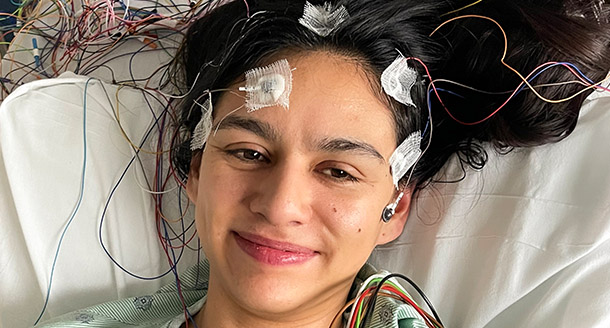Overview
Lymphoma is abnormal growth of cells that originate from the lymphatic system, which is part of the body’s immune system. Central nervous system (CNS) lymphoma occurs when these abnormal cells form in the brain or spinal cord (primary) or spread there from other parts of the body (secondary). CSN lymphoma can also involve the cerebrospinal fluid (CSF), which is the fluid that circulates around the brain and spinal cord. Of the primary CNS lymphomas, diffuse large B-cell lymphoma of the CNS (CNS-DLBCL) which was previously called “primary CNS lymphoma” is the most common. With CNS-DLBCL, people may have trouble with memory, attention, problem-solving, or language that impact their daily living, sluggishness in physical and/or mental activities, one-sided weakness, difficulty with speech or language, and vision changes.
2021 WHO CNS Grade
Grading for CNS lymphoma is not discussed in guidelines. It is important to speak with your health care provider to understand your diagnosis.
Statistics
- Percent of All Brain and Other CNS Tumors: 1.8%
- Average Annual Age-Adjusted Incidence Rate: 0.44 per 100,000
- Median Age at Diagnosis: 67 years
Survival
Survival rates compare the percentage of people living with a particular diagnosis at a particular point in time compared to the general population.
- One-Year Relative Survival Rate: 56.8%
- Five-Year Relative Survival Rate: 40.2%
- Ten-Year Relative Survival Rate: 32.5%
Treatment Options
Every person living with a brain or CNS tumor is unique. If you have been diagnosed with a brain or CNS tumor and would like to better understand your treatment options, it is important to work with your health care team to decide the best course of treatment for you. You may also consider getting a second opinion or reaching out to our Personalized Support and Navigation team to learn more.
References
The above information is from the World Health Organization (WHO) Central Nervous System (CNS) Tumors Classification of Tumours and the Central Brain Tumor Registry of the United States (CBTRUS) unless otherwise noted. It was written by NBTS staff and medically reviewed by members of the NBTS Scientific and Medical Advisory Council.
Last updated April 22, 2025
Please speak with your health care provider for more information about your tumor type, biomarkers, and treatment options, including clinical trials.



